Resti del Tempio Greco (Chiesa di San Domenico)
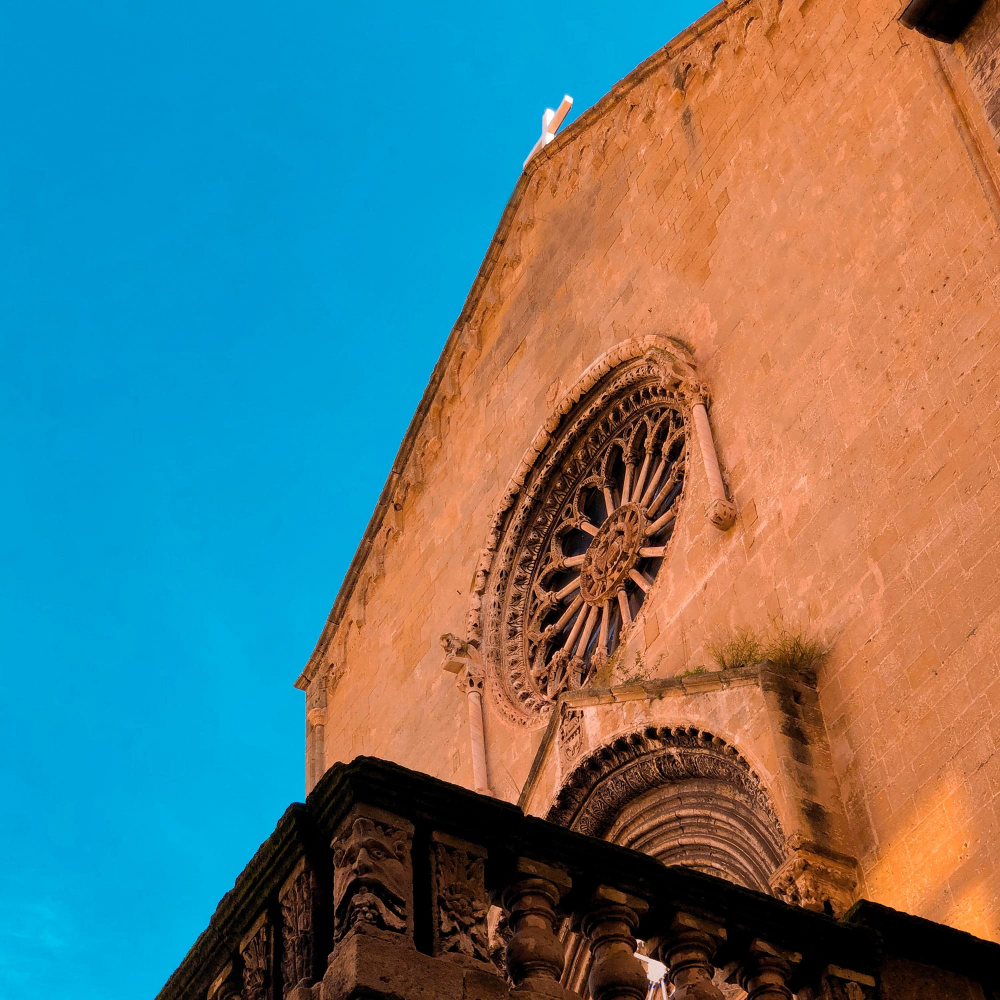
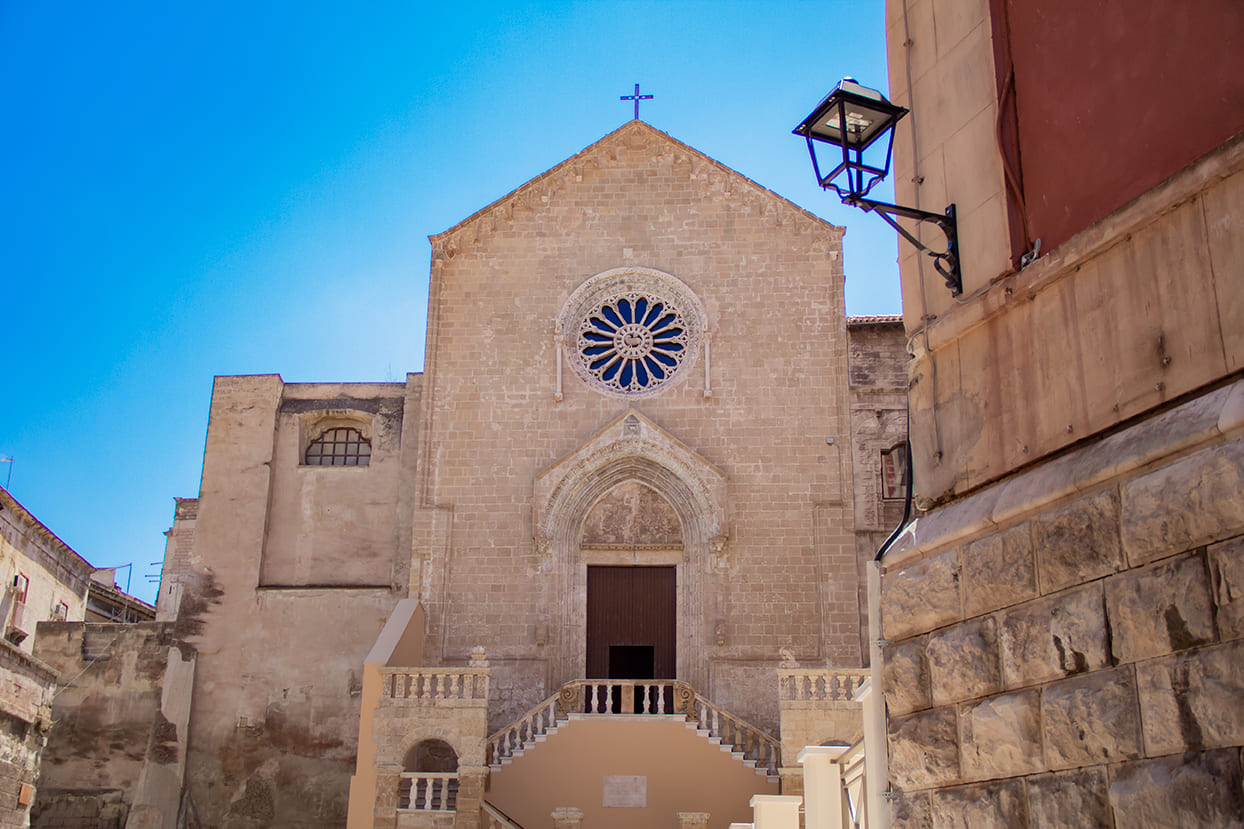
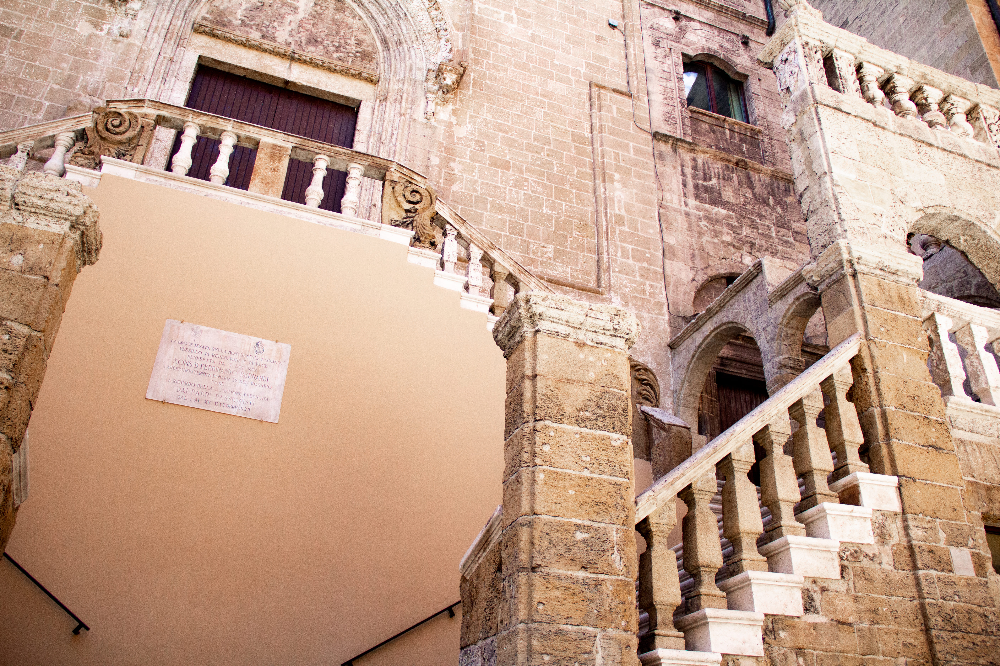
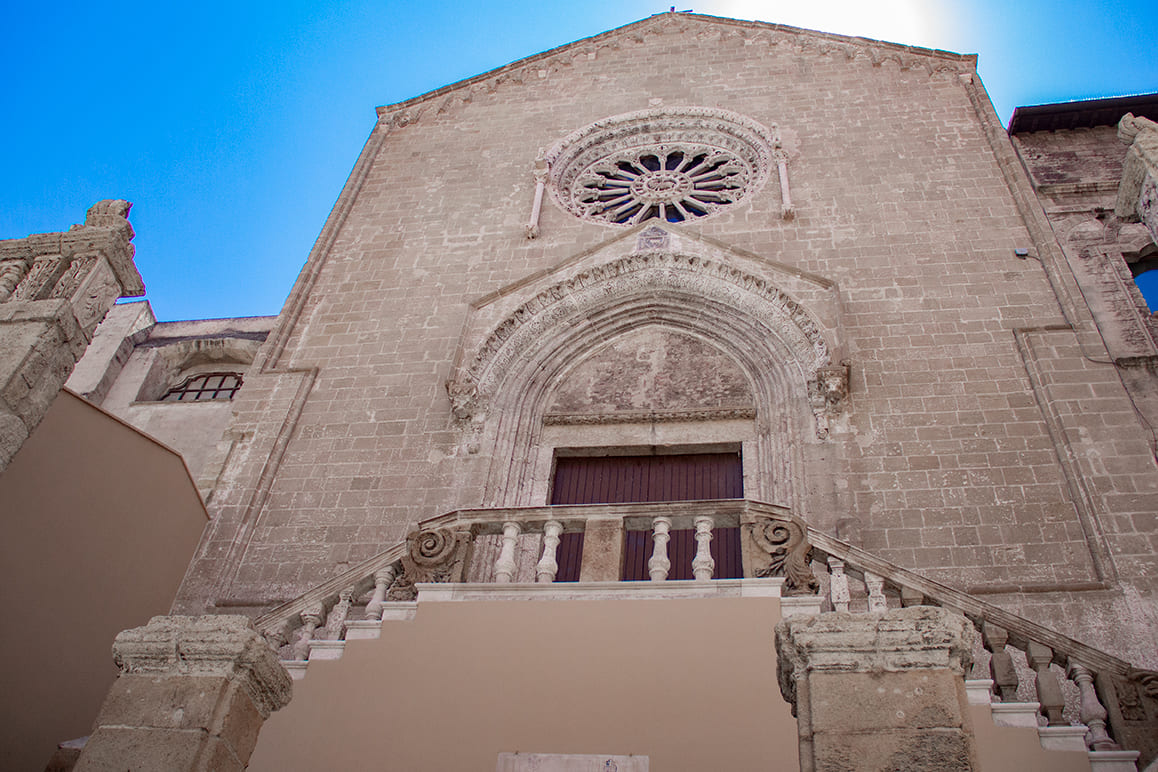
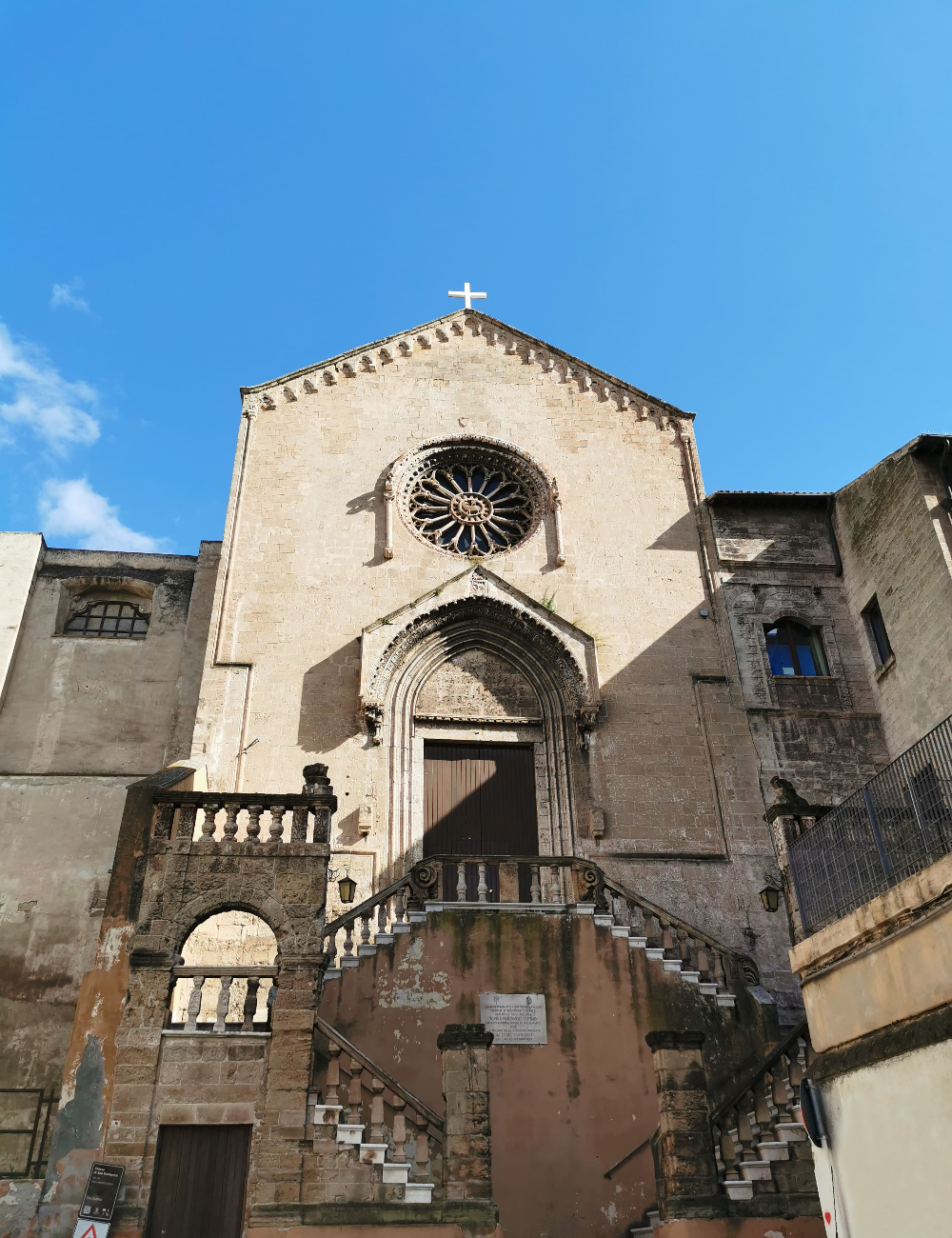
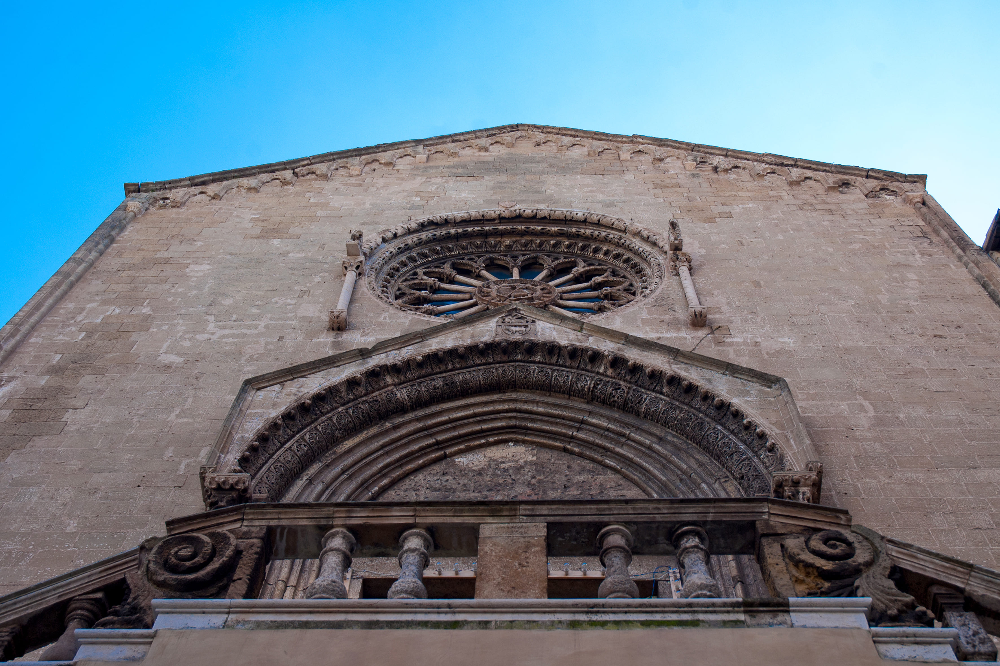

Church of San Domenico Maggiore (Remains of the Greek temple)
Churches
As with the Church of the Holy Trinity (now demolished), the medieval church of San Domenico Maggiore was also built on top of the remains of a large Greek temple which probably dates back to the Archaic period.
Inside the rooms at the foot of the monumental staircase of the church, in recent times, the remains of the substructures of the western wall of the Greek temple, already known and investigated by the archaeologist Felice Gino Lo Porto, have been traced.
The wall face, corresponding to the western side of the building of the Greek age, extends for about 12 meters, setting itself directly on the rocky bank. The blocks of local stone, well worked, were laid dry, that is, without the use of binders or mortar. According to archaeologists, the remains found inside the eighteenth-century stairway leading to the church of San Domenico Maggiore belong to one of the two large temples of the Archaic period built on the acropolis of the polis of Taranto. From the analysis of the masonry works identified in these rooms and those clearly visible inside the Cloister of San Domenico, it is possible to hypothesize that the structure had considerable dimensions and an absolutely monumental appearance. If the archaeological investigation works carried out over the years have shown that the great place of worship underwent a series of renovations, the most important during the fifth century. BC, did not give the possibility to hypothesize the divinity to which the temple was dedicated.
As with the Church of the Holy Trinity (now demolished), the medieval church of San Domenico Maggiore was also built on top of the remains of a large Greek temple which probably dates back to the Archaic period.
Inside the rooms at the foot of the monumental staircase of the church, in recent times, the remains of the substructures of the western wall of the Greek temple, already known and investigated by the archaeologist Felice Gino Lo Porto, have been traced.
The wall face, corresponding to the western side of the building of the Greek age, extends for about 12 meters, setting itself directly on the rocky bank. The blocks of local stone, well worked, were laid dry, that is, without the use of binders or mortar. According to archaeologists, the remains found inside the eighteenth-century stairway leading to the church of San Domenico Maggiore belong to one of the two large temples of the Archaic period built on the acropolis of the polis of Taranto. From the analysis of the masonry works identified in these rooms and those clearly visible inside the Cloister of San Domenico, it is possible to hypothesize that the structure had considerable dimensions and an absolutely monumental appearance. If the archaeological investigation works carried out over the years have shown that the great place of worship underwent a series of renovations, the most important during the fifth century. BC, did not give the possibility to hypothesize the divinity to which the temple was dedicated.
Recommended route
Discover the recommended tourist route to visit the Church of San Domenico and the other points of historical and cultural interest in the nearby
Nearby
Do you want to continue the tour? The Cathedral of San Cataldo is not far away! Reach the Cathedral of Taranto, it is just a few steps away!
Rites of Holy Week
Do you know the rites of the Holy Week in Taranto? Discover the role of the Church of San Domenico in the rites of Holy Week
Church of San Domenico Maggiore (Remains of the Greek temple)
Churches
As with the Church of the Holy Trinity (now demolished), the medieval church of San Domenico Maggiore was also built on top of the remains of a large Greek temple which probably dates back to the Archaic period.
Inside the rooms at the foot of the monumental staircase of the church, in recent times, the remains of the substructures of the western wall of the Greek temple, already known and investigated by the archaeologist Felice Gino Lo Porto, have been traced.
The wall face, corresponding to the western side of the building of the Greek age, extends for about 12 meters, setting itself directly on the rocky bank. The blocks of local stone, well worked, were laid dry, that is, without the use of binders or mortar. According to archaeologists, the remains found inside the eighteenth-century stairway leading to the church of San Domenico Maggiore belong to one of the two large temples of the Archaic period built on the acropolis of the polis of Taranto. From the analysis of the masonry works identified in these rooms and those clearly visible inside the Cloister of San Domenico, it is possible to hypothesize that the structure had considerable dimensions and an absolutely monumental appearance. If the archaeological investigation works carried out over the years have shown that the great place of worship underwent a series of renovations, the most important during the fifth century. BC, did not give the possibility to hypothesize the divinity to which the temple was dedicated.
contacts
Via Duomo 33, Taranto TA
addolorata-taranto.it
+39 391 1128 554
useful information
accessible
opening time
on reservation